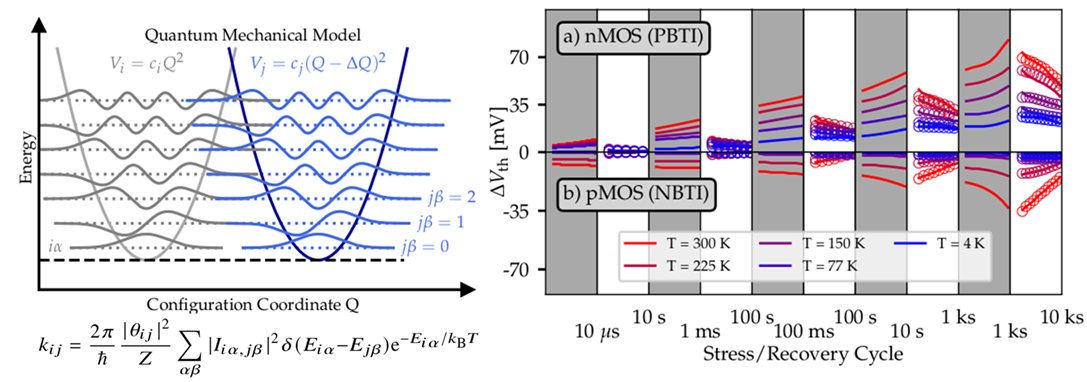Fundamental investigation of transistor degradation mechanisms at cryogenic temperatures
Leuven | More than two weeks ago
Large-scale quantum computers are not only the chief contenders to break limits of CMOS scaling but also have the potential to massively boost fundamental research in fields such as cryptography, computational chemistry, and material science. Bringing the control interface close to the qubits is thereby crucial to scale the number of qubits, reducing limitations due to wiring and signal integrity. Therefore, it is necessary to develop on-chip solutions with ultra-low power consumption and optimized noise and performance figures [1].
Lowering the supply voltage for cryogenic circuits is the most common approach to lower power consumption, hence the margins for performance degradation and variability of CMOS devices at cryogenic temperatures is a topic of great interest [2], [3]. Traditional reliability models like time-dependent dielectric breakdown, bias temperature instability, and hot-carrier degradation are thought to freeze out at low temperatures. However, recent experimental studies have reported an unexpected weakening of this temperature activation in the cryogenic regime, suggesting the need for a fundamental revision and expansion of common degradation models [4], [5].
These models rely on a deep understanding of different physical phenomena, such as charge transport in semiconductors and dielectrics or microscopic mechanisms for the creation and charging kinetics of point defects. This situation is, however, even more intricate because different physical mechanisms such as band-tail carrier transport and interface disorder can dominate the device behavior at deep cryogenic temperatures (4 K down to mK). Another intriguing aspect of operating at such low temperatures is that the increased energy selectivity in this regime can potentially also be used to gain valuable insights in the microscopic nature of defects.
[1] X. Xue et al., doi: 10.1038/s41586-021-03469-4.
[2] A. Grill et al., doi: 10.1109/EDTM55494.2023.10102937.
[3] A. Grill et al., doi: 10.1109/IRPS45951.2020.9128316.
[4] J. Michl et al., doi: 10.1109/TED.2021.3116931.
[5] R. Asanovski et al., doi: 10.1109/TED.2022.3233551.
What you will do:
- You will investigate the electrical impact of defect generation and charge trapping in advanced CMOS devices from room-temperature down to cryogenic temperatures (4K down to mK).
- You will design and execute specific experiments or simulations to unravel fundamental defect physics of cryo-CMOS gate stacks independently of the underlying technology.
- Your studies will help to explore the limits of traditional reliability models and improve our understanding of the microscopic nature of point defects in MOS devices.
- You will identify key mechanisms for the device degradation of advanced CMOS devices at deep cryogenic temperatures and their impact on device operation.
Who you are:
- You have a master’s degree in solid-state physics, semiconductor (device) physics, electrical engineering, microelectronics, computational physics, or related fields.
- You would like to understand the physics of defects in MOS gate-stacks on a fundamental level.
- You want to simulate and/or measure CMOS devices at cryogenic temperatures.
- You have a hands-on-mentality and like to take the initiative, while keeping a constructive attitude within the team.
- Given the international character of imec, a fluent knowledge of English is necessary.
Figure 1: Left: Quantum mechanical formulation of the non-radiative multi phonon model to explain oxide defect kinetics at 4K. Right: Simulation results vs. measurement data for threshold voltage drift as function of temperature and stress time.

Required background: solid-state physics, semiconductor (device) physics, electrical engineering, microelectronics, computational physics, or related fields
Type of work: 40% electrical measurements or simulations of CMOS devices at various temperatures, 40% data analysis and modeling, 20% literature research
Supervisor: Michel Houssa
Co-supervisor: Stanislav Tyaginov
Daily advisor: Alexander Grill
The reference code for this position is 2025-076. Mention this reference code on your application form.
